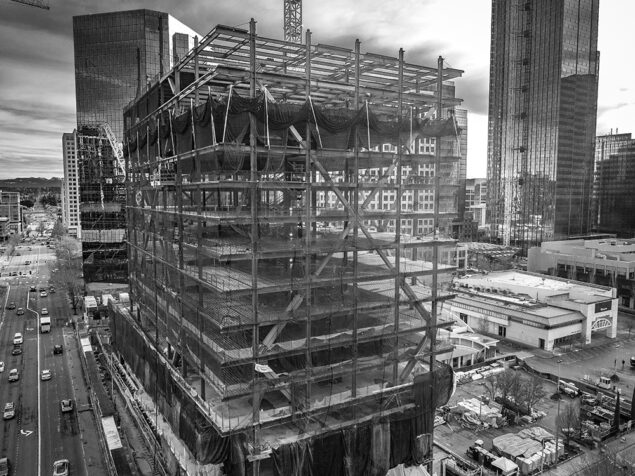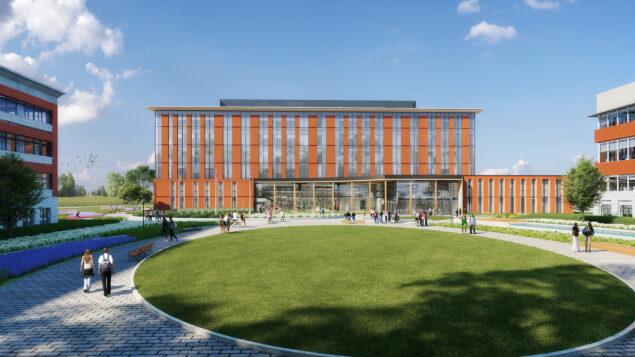Although pervious concrete has been around since the 1800’s, we wanted to learn more about this unique and sustainable alternative to traditional concrete. As our resident pervious concrete pro, we sat down with Damon Smith to discuss the basics.
What is pervious concrete?
Pervious concrete is a very permeable concrete product with over 30% “voids” or air pockets that allows water to run right through it. Pervious concrete looks like a Rice Krispie® Treat.
How is it made?
It is made like any other concrete product; with cement, water, and aggregate. The difference is the “recipe”; uniformly graded (all one size) aggregate and a very precise mixture of cement and water.
How can it be incorporated into sustainable design?
Pervious concrete is important in sustainable design because it eliminates storm water runoff from otherwise impervious surfaces such as parking lots. Storm water runoff from surfaces such as parking lots typically pollutes our streams, rivers, lakes, and oceans.
Have there been any changes in the last couple of years with the composition or technique for using this type of concrete?
Pervious concrete has been around for centuries in Europe, decades on the east coast of the United States, and just recently on the west coast of the U.S. Not much has changed in the way the product is made or the way it is used. However, color additives are now readily available for use in pervious concrete. DCI Engineers has been involved with some test plots in Spokane, Washington using color additives in decorative sidewalks.
What types of projects has DCI done with pervious concrete?
We designed some sidewalk test plots along a new county road in Spokane County about 5 years ago. Since then the City of Spokane has built several road improvement projects incorporating pervious concrete, rain gardens, and other sustainable design features.
What types of problems does pervious concrete solve?
If the soils beneath the pervious concrete cannot infiltrate the storm water, the system will not work. Imagine a bathtub filling with water, but having no drain to let the water out.
What are the benefits of using this concrete?
Storm water runoff is eliminated, often yielding more developable property on a site because there is no need for a detention basin to mitigate storm water runoff from impervious surfaces.
What are the cons of using this concete?
The initial cost of pervious concrete is about 25% more expensive than asphalt. The cost benefit comes with the increase in developable property. Take a shopping center, for example. If we can give the developer 8% to 10% of his land back (because we don’t have to build storm water detention basins), he can have more leasable building area that generates rent every month for the life of the shopping center.
When would someone choose to use pervious over other forms of concrete?
A couple of important considerations need to be made when considering pervious concrete:


To learn more about the types of projects we do, check out our portfolio!


